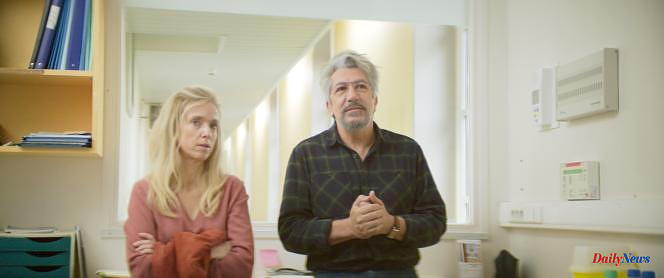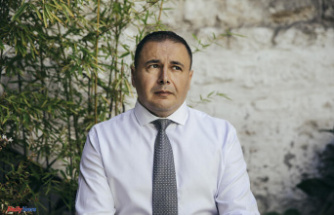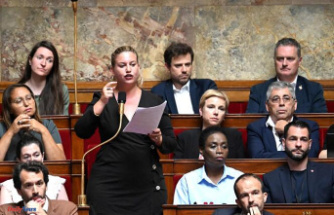Quentin Dupieux is in the process of inventing, at the heart of French cinema, an improbable niche, a new pataphysical comedy. The filmography of this multi-cap director has crystallized in a formula which consists of combining a short duration with an explosive concept, with a high potential for absurdity, oscillating between surrealist fable and parodic sketch, eccentric B series and schoolboy humbug assumed as speed of execution – examples include Le Daim (2019) and its fringed jacket dictating murderous impulses to whoever wears it, or even Mandibles (2020) and its giant fly trained by two morons.
Incredible but true is the latest specimen. Everything here revolves around a hole, a silly pipe made in the cellar of a house. According to the real estate agent who shows it around, this is the "nail" of the pavilion that Alain and Marie (Alain Chabat and Léa Drucker) are reluctant to buy, an ordinary couple in all respects, middle-aged and childless. And for good reason, since the well houses nothing less than a spatio-temporal vortex. Who descends there not only emerges on the floor, but is propelled twelve hours later and rejuvenated by three days.
Smelling a vague windfall, the household settles in. Alain, an insurance agent with a big hair in his hand, quickly loses interest in this absurd passage, but Marie, dreaming of rediscovering her early youth, lets herself be absorbed in it by blocks of twelve hours, increasingly abandoning the home. .
Abyss to the role of revealer
The first comic spring of the film comes from this funny friction between the most flat ordinary and the extraordinary as posed in the middle. From the hole and its aberrant device, worthy of the impossible constructions of the artist Maurits Cornelis Escher, Dupieux does not make a fictional enhancer, but on the contrary has fun underlining its useless, inoperative character.
The abyss plays the role of revealer, exposing the nothingness on which the married life of the two partners rests. The vortex leads nowhere, so it works in a closed circuit – the image of the hole referring, of course, to the unconscious of the owner lying under the newly acquired house. If the conduit does indeed act, however, it is first of all as a disruptive agent, which thus accentuates the terms of everyday life: this stubborn and mechanical repetition, this return of the same which makes limited domestic life a kind of toboggan towards the dead.
In a last hair-raising movement, the film accelerates and exhausts the catastrophic destinies of the characters, who all spin towards their own death. Thus the farce according to Dupieux always retains a horrifying background, a morbid part. At the end, it is to Luis Buñuel, master of surrealism, that the film returns, quoting a famous shot from Un Chien Andalou (1929): a hand invaded by ants, a concentrate of anguish and desire that one will leave it to everyone's unconscious to sort it out.












